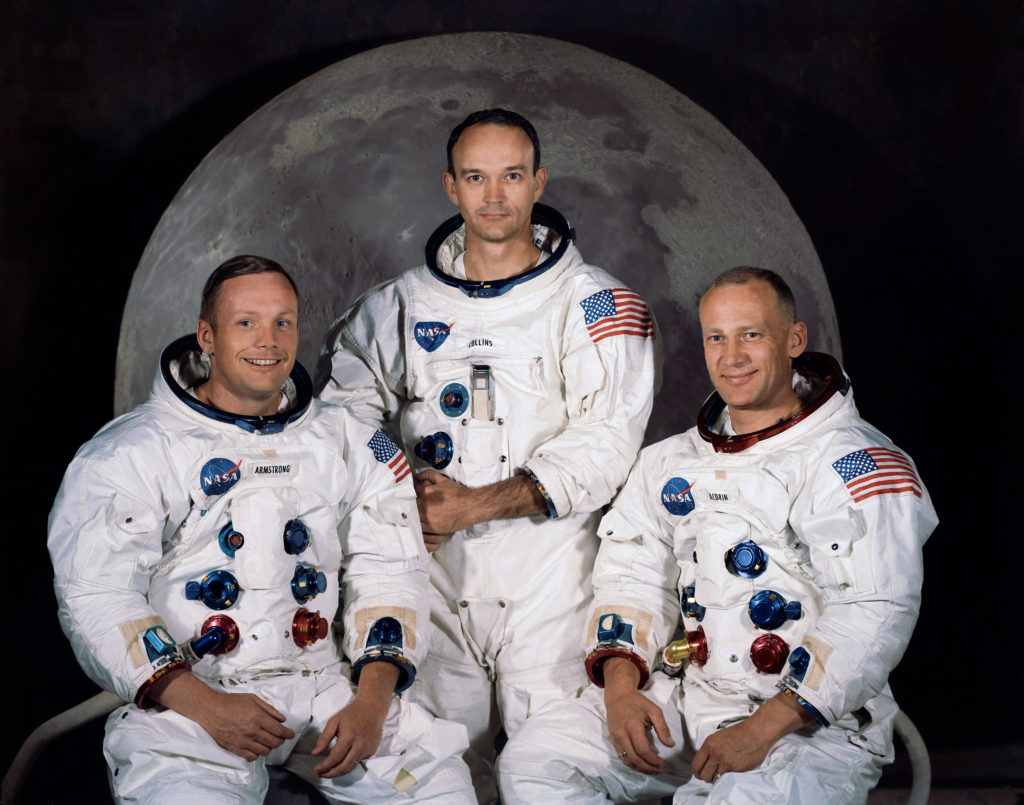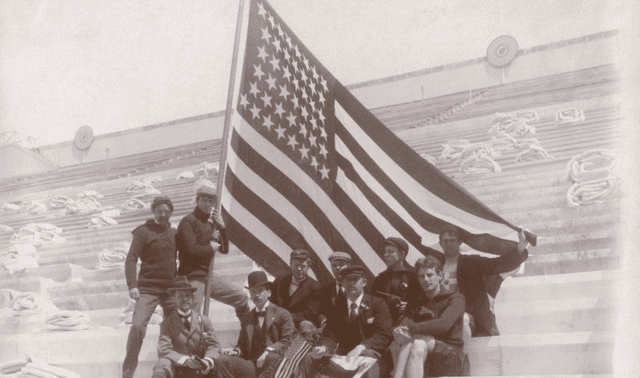Humans have been eyeing space since long before the Starship Enterprise began exploring the final frontier in “Star Trek.” Imaginary journeys like those of the Enterprise have always outpaced the rocket reality.
Space travel was a popular theme in literature much earlier than the term “science fiction” was first used in 1851. The Hindu epic poem Ramayana (fifth to fourth century BC) described mechanical birds that could fly beyond the earth. In True History, by the Syrian writer Lucian of Samosata in the second century, travelers ride a whirlwind to the moon and observe an interplanetary battle. But the author’s intent, as with most early space tales, was satire rather than adventure. That was the case as late as 1659, when playwright Cyrano de Bergerac published Comical History of the States and Empires of the Moon. Nonetheless, science-fiction writer Arthur C. Clarke credited de Bergerac’s work as the first example of a rocket-powered space flight.
Developments in physics and astronomy began to affect imaginary voyages, such as a trip to the moon scientist Johannes Kepler described in Somnium (1634). Although also influenced by the discoveries of his day, Francis Godwin chose to have huge swans power the travels in The Man in the Moone (1638).

Meanwhile, science was working on reaching space for real. The principles of rocketry had been demonstrated long before Isaac Newton’s third law of motion—for every action there is an equal and opposite reaction—in 1687. About 400 BC, the Greek thinker Archytas showed how escaping steam could propel a wooden pigeon suspended by wires. The Chinese invented gunpowder in the 11th century by combining sulfur, charcoal and saltpeter; bamboo tubes filled with gunpowder created fireworks for religious festivals. In the 1232 battle of Kai-Keng, the Chinese repelled Mongol invaders using “arrows of flying fire.”
The Mongols soon copied the idea and spread rockets to Europe, where the philosopher Roger Bacon wrote of experiments in 1258. In 1379, an Italian named Muratori first used rochetta, the word later translated into English as “rocket.” The Chronicles of Jean Froissart in 1410 described the design of tube-launched military rockets. In 1591, German fireworks maker Johann Schmidlap invented the step rocket—a multistage technology eventually used in the Saturn rockets that sent men to the moon.
Science fiction, however, was already way ahead of the scientists. Edgar Allan Poe’s hero in “The Unparalleled Adventures of One Hans Pfaall” (1835) was the first to prepare for space travel by providing himself with air to breathe. In From the Earth to the Moon (1865), Jules Verne described a cannon capable of shooting a capsule into space, complete with food, water, air and an Apollo-style crew of three. Verne’s novel was loosely adapted into the first science fiction film, A Trip to the Moon (Le Voyage Dans la Lun), in 1902. The tongue-in-cheek film showed chorus girls loading the cannon and the capsule poking the Man in the Moon in the eye. It also borrowed moon dwellers from H.G. Wells’ First Men in the Moon, published the previous year.
Another Russian, schoolteacher Konstantin Tsiolkovsky, in 1903 proposed the use of liquid-fueled rockets to reach space. Because of his understanding of the potential of escaping gases to propel spacecraft, Tsiolkovsky has been called the father of modern astronautics.
But it was an American, Robert H. Goddard, who proved it could actually be done. His mathematical analysis, A Method of Reaching Extreme Altitudes (1919), was put to the test in Auburn, Mass., on March 16, 1926, when Goddard successfully launched a rocket fueled by liquid oxygen and gasoline. The flight lasted only two and a half seconds and hardly reached “extreme altitudes”—only 12.5 meters, landing 56 meters away in a cabbage patch, but the rocket age was born.
The New York Times, which published an editorial calling Goddard’s theory that such a rocket could work in space “absurd,” waited until the launch of Apollo 11 in 1969 to issue a correction: “Further investigation and experimentation have confirmed the findings of Isaac Newton in the 17th century and it is now definitely established that a rocket can function in a vacuum as well as in an atmosphere. The Times regrets the error.”
The authors published by Hugo Gernsback in the first science fiction magazine Amazing Stories, founded in the year of Goddard’s first rocket flight, were less skeptical than the Times. They envisioned “space operas,” as in E.E. “Doc” Smith’s The Skylark of Space (1928).
In Germany, the popularity of Hermann Oberth’s writings about rocket travel to space led to the formation of clubs such as the Society for Space Travel. Oberth and club members, under the leadership of aerospace engineer Werner von Braun, helped develop the V-2 rockets used against Britain in World War II. Many German scientists later fled to the US and Soviet space programs.
In movies like Destination Moon, released in 1950 and co-scripted by science fiction author Robert Heinlein, fiction again outran fact. As the space race heated up, “Star Trek” debuted on television in 1966 and 2001: A Space Odyssey, based on a Clarke short story, took humanity to Jupiter. When American astronaut Neil Armstrong actually walked on the moon in 1969, science-fiction fans might have thought, “Been there. Done that.”
Fun Facts
Early imaginings of space travel used mysterious means of propulsion, such as the unexplained “apergy” in Percy Greg’s Across the Zodiac (1880) and the antigravity material “Cavorite” in H.G. Wells’ First Men in the Moon (1901).
In Prelude to Space, published in 1951, science fiction writer Arthur C. Clarke described a command module-lunar lander mission to the moon much like Apollo 11’s Columbia and Eagle craft.
British Col. William Congreve, impressed by the success of Indian rocket barrages in 1792, developed the rockets used against Fort McHenry in the War of 1812. Their “red glare” inspired “The Star-Spangled Banner.”
In Star Trek: The Motion Picture (1979), the Enterprise crew encounters “V’Ger,” an evolution of the Voyager 6 space probe supposedly launched in the late 20th century. Only two Voyagers were actually launched, both in 1977.
Timeline
1865 | Jules Verne publishes From the Earth to the Moon
1903 | Konstantin Tsiolkovsky proposes liquid-fueled rockets
1926 | Robert H. Goddard launches the first successful liquid-fueled rocket
1942 | Germany tests the first ballistic missile
1957 | USSR launches Sputnik
1961 | Yuri Gagarin is the first man in space
1962 | John Glenn is the first American to orbit the earth
1966 | Gene Roddenberry’s “Star Trek” debuts on NBC
1968 | Stanley Kubrick produces 2001: A Space Odyssey
1969 | Apollo 11 puts first humans on the moon
1977 | Star Wars debuts





